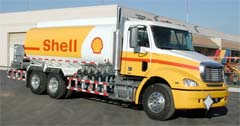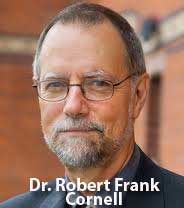This week, we take a month by month look at some of the top stories in the Green supply chain and Sustainability in 2012
Phase I of California's Cap and Trade program begins on January 1. 350 California businesses representing approximately 600 facilities will be covered by the program. Those businesses will be mostly electric utilities and large industrial facilities and will need to fully comply by 2013. Distributors of transportation, natural gas and other fuels will need to become compliant in 2015.
Early in January, Clean Energy Fuels announces its "route plan" for the first phase of 150 new liquid natural gas (LNG) fueling stations for what it calls "America's Natural Gas Highway." The company says it has identified 98 locations and anticipates having 70 stations open by the end of 2012 in 33 states, often in partnership with Flying J/Pilot truck stops.
In January, PepsiCo CEO Indra Nooyi is on the hot seat for the food and beverage giant's lack of sales growth and flat stock price over the past 5 years, which some are blaming on too much focus on healthy foods in recent years and a corresponding lack of attention to core soda business.
In February, consumer and industrial products maker Henkel, a German company with significant presence in the US and around the globe, released its latest sustainability report, and announced an ambitious new Sustainability strategy for 2030 that aims to triple the company's production and resource efficiency over the next two decades, under the name of "Factor 3."
In March, William Happer, a professor of physics at Princeton University, authors controversial column in the Wall Street Journal saying that global temperatures have not risen in a decade, and generally dismisses man-made global warming anyways. Push back is big and furious, with many saying that because Happer is not a true climatologist, he lacks credibility.
In April, Walmart releases its 2012 Sustainability report, indicating progress in an amazing amount of different areas of the supply chain and beyond. Notes, among many examples, that is has achieved its goal of seeing a reduction of energy consumption of 20% in the 200 largest factories in China that supply Walmart in 148 of them. Notes that in January, Walmart announced plans for a "Great for You" icon to help consumers easily and quickly identify healthier food options. Company has seen a 25% improvement in its recordable injury rate in its DC operations through a program it calls "Actively Caring."
Also in April, New York Times article says Walmart used massive bribes to facilitate its hugely successful entry into the Mexican market a decade ago, but story does not really stick. SCDigest editor Dan Gilmore says goodwill Walmart has built up in Washington, including the White House, over its aggressive Sustainability efforts helping to inoculate it from the outrage that would have been seen before those programs.
 In June, more momentum building for natural gas powered trucks to move freight. Shell says it is jumping into the natural gas filling station game, announcing plans to develop filling stations at some 100 Travel Centers of America truck stops, creating a new competitor for Clean Energy Fuels. That same week, moving equipment giant Caterpillar announced that it had entered into an agreement with Westport, a leading in natural gas engines for the trucking industry, to co-develop natural gas technology for engines for Caterpillar's line of equipment. In June, more momentum building for natural gas powered trucks to move freight. Shell says it is jumping into the natural gas filling station game, announcing plans to develop filling stations at some 100 Travel Centers of America truck stops, creating a new competitor for Clean Energy Fuels. That same week, moving equipment giant Caterpillar announced that it had entered into an agreement with Westport, a leading in natural gas engines for the trucking industry, to co-develop natural gas technology for engines for Caterpillar's line of equipment.
Also in June, the annual BP Review of World Energy is released, showing that global energy consumption grew by 2.5% in 2011, 71% of that coming from China. Meanwhile, BP says that coal's market share of energy consumption was 30.3% in 2011 - the highest since 1969. Greenhouse gas emissions were up globally. Alternative energy usage rising fast, but still a tiny percent of total.
Again in June, The California Manufacturers and Technology Association issues report saying state's Cap and Trade program will cost the economy there much more than California government's own predictions, and estimating that increased energy and transit prices will increase household expenses for the average California family by $2,500 per year in 2020.
In July, major article from McKinsey promotes concept of the "Circular Economy," and asks in part whether businesses should retain the rights to the products/materials they sell to consumers to drive recycling/re-use. Hmm….
I n late August, Dr. Robert Frank, an economics professor at the Johnson Graduate School of Management at Cornell University, writes Op-Ed column suggesting US should quickly move to $300 per ton tax on carbon to slow global warming. Such a move would increase the cost of gasoline about $3.00 per gallon. n late August, Dr. Robert Frank, an economics professor at the Johnson Graduate School of Management at Cornell University, writes Op-Ed column suggesting US should quickly move to $300 per ton tax on carbon to slow global warming. Such a move would increase the cost of gasoline about $3.00 per gallon.
In September, at the IAA Commercial Vehicles expo in Hanover, Germany, several new tractor-trailer designs are unveiled that promise great improvements in aerodynamics and hence fuel consumption. German truck maker MAN, for example unveiled an aerodynamic class 8 tractor-trailer the company says can cut fuel consumption and carbon dioxide emissions by some 25%. Company says the new tractor-trailer could be available to the market as soon as the next generation of its trucks are designed for production in just a few years. But that is only if the current length limits are relaxed, so that MAN can be confident in making the additional investments in design and production.
In early October, legendary oil investor and Clean Energy Fuels founder Boone Pickens keynotes CSCMP annual conference in Atlanta, says natural gas trucks will be widespread in 7-8 years, 3-4 years if Congress ever approves loan program for truck buyers.
In October, Walmart CEO Mike Duke said that the retail giant plans to have at least 70% of the products it procures being covered by its Sustainability index, and that its buyers will now be measured in part in their use of the measure in vendor/product selection to spur adoption.
 In early November, news that Walmart is testing in Canada a new concept truck it calls Supercube, with several major changes in design that lead to as much as a 30% increase in total cube available. The pilot vehicles use a 60.5-foot long trailer, versus the standard 53-foot trailer design, plus adds a separate "drome box" that sits between the tractor and the traditional trailer. In early November, news that Walmart is testing in Canada a new concept truck it calls Supercube, with several major changes in design that lead to as much as a 30% increase in total cube available. The pilot vehicles use a 60.5-foot long trailer, versus the standard 53-foot trailer design, plus adds a separate "drome box" that sits between the tractor and the traditional trailer.
2012 UN climate conference in Doha, Qatar ends in a dud, with almost no media coverage versus previous years. Relatively few nations renew Kyoto emissions accord, and Russia, Japan, Canada and New Zealand drop out. Little or no progess on other issues. The Reuters news agency reported that "many of those most concerned about climate change are close to despair" coming out of the conference.
Any reaction to these top Green supply chain stories? What would you add? Let us know your thoughts at the Feedback button below.

|